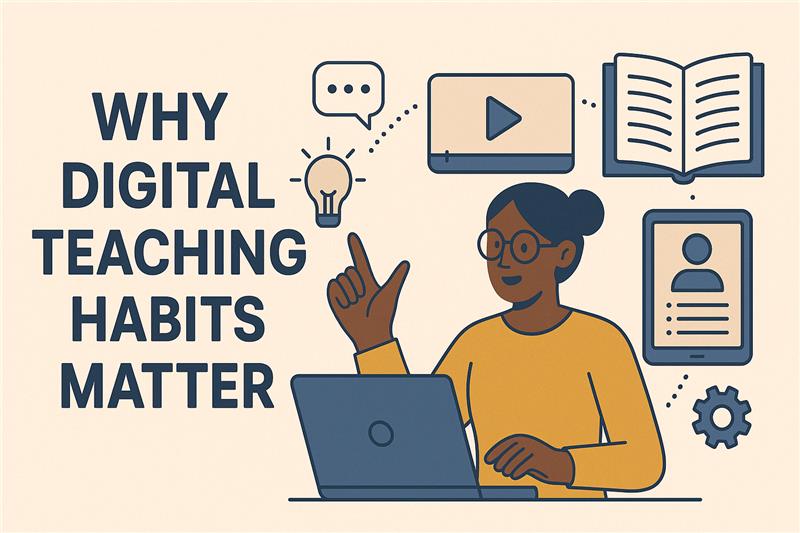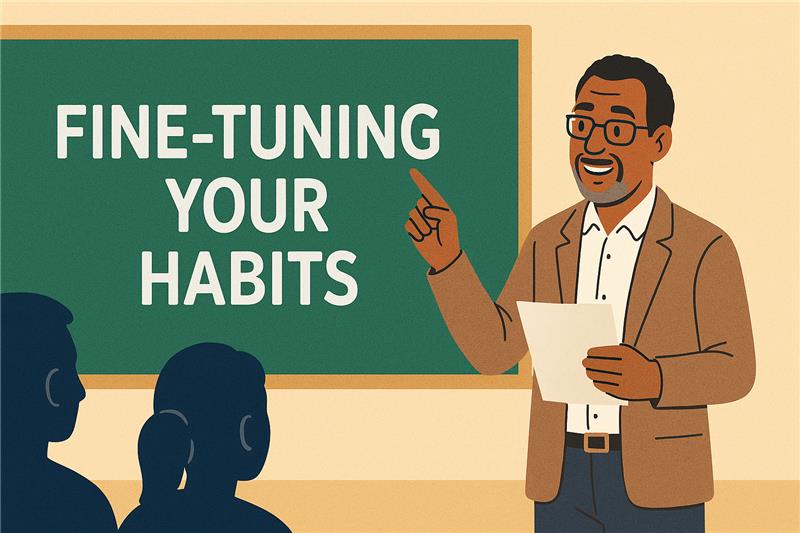
Building digital competence is not just about learning new tools — it’s about creating sustainable habits that help you use technology confidently and effectively in your teaching. Sustainable habits are small, consistent actions you repeat regularly, which gradually build your skills and reduce stress.
When you develop such habits, technology becomes a natural part of your workflow, rather than an occasional challenge or a source of frustration. This intentional use of digital tools helps you:
Beyond practical benefits, sustainable habits also shape your mindset. They encourage you to experiment, learn from mistakes, and approach new tools with curiosity. Over time, this creates a strong foundation for ongoing professional growth and innovation.
Consistency comes from integrating simple digital steps into your daily or weekly teaching practice. These steps don’t need to be big; when repeated over time, they become second nature.
Examples:
Example: Self-nudge 12 – Getting Started with Digital Tools – UB
Read more.
Examples:
Example: Self-nudge 13 – Digital Content Creator Challenge – Momentum
Challenge yourself to create digital teaching resources. Read more.
Examples:
Example: Self-nudge 7 – Micro-Learning Moments – Trendhuis
Read more.

For habits to stay useful, they must be flexible and adaptable. Reflection, adjustment, and reinforcement ensure your digital practices grow.
Example: Self-nudge 6 – Collaboration Sparks – Trendhuis
Read more.
Watch the following video, and an example of how to improve Student Engagement in live online classes.
Building sustainable habits is essential, but the next step is making your progress visible and tangible. When you can track and reflect on your efforts, habits become more rewarding, and your progress motivates continued improvement.
Link habits to measurable outcomes
Identify small, observable actions within your routines, like posting a discussion prompt, running a quick poll, or sharing feedback digitally. These actions become markers of your development, showing how your skills are growing.
Set up simple tracking systems
Use tools like checklists, dashboards, or digital journals to record your achievements. Seeing your progress over time reinforces motivation and helps you identify patterns in what works best.
Connect habits with reflection and recognition
Regularly review your routines to see which habits are effective and which need adjustment. Share successes with peers or mentors to create accountability, receive feedback, and celebrate milestones.